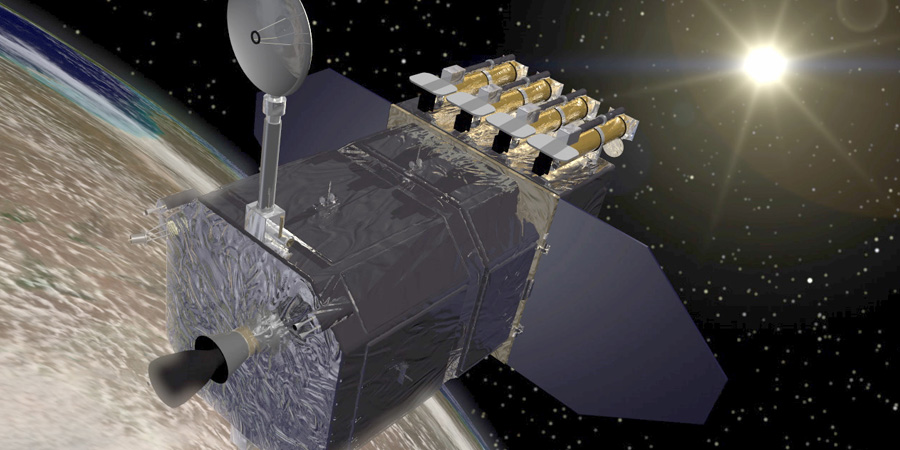High solar activity, SDO data outage
Thursday, 6 November 2014 22:45 UTC

Solar activity again continues at high levels as sunspot region 2205 produced three M-class solar flares today including an M5.4 (R2-moderate) solar flare at 03:46 UTC. We can unfortunately not provide you with imagery of these solar flares or this sunspot region as captured by the NASA SDO mission because it has now been more than 24 hours since we last received SDO data. In this article we nonetheless give you an overview of the events from today and provide information regarding the SDO data outage.
Sunspot region 2205
Sunspot region 2205 remains active today with M3.2 and M5.4 solar flares and just moments ago an M2.5 solar flare. Coronagraph imagery from SOHO reveals that the M3.2 and M5.4 events were eruptive and produced minor coronal mass ejections. They are however directed away from Earth but this could change in the days ahead as sunspot region 2205 rotates into a more geo-effective position. At the time we published this article, it was still too early to determine if there was a coronal mass ejection associated with the M2.5 event that peaked at 22:16 UTC.
SDO data outage
It is now more than 24 hours ago that we recieved new data from SDO as fiber cables between WSMR and Standford were accidently cut. This means we can not analyse the current state of sunspot region 2205 as ground based observatories do not provide us with imagery that are detailed enough to give you a reliable overview of sunspot region 2205. The images on the sunspot regions page are thus also not accurate until new data comes in. The official SDO mission blog put out the following statement regarding the outage:
The SDO JSOC is recovering from an internal disruption and images are unavailable. This outage should last 24 hours.
Update 11/5/2014 2142 UTC: We have learned that the fiber cables between WSMR and Stanford were accidently cut. This outage will continue until the location has been determined and the lines repaired or bypassed. The problem at the JSOC has been fixed and, until this new outage, the image cadence was being restored.
Update 11/6/2014 1447 UTC (9:47 am ET): The fiber optics provider has found the break, dug it up, and should be splicing the fiber links soon. I do not know how long each fiber takes to splice or how many fibers are in this bundle, so there is no estimate at this time when we will return to service.
Thank you for reading this article! Did you have any trouble with the technical terms used in this article? Our help section is the place to be where you can find in-depth articles, a FAQ and a list with common abbreviations. Still puzzled? Just post on our forum where we will help you the best we can!
Latest news
Latest forum messages
Support SpaceWeatherLive.com!
A lot of people come to SpaceWeatherLive to follow the Sun's activity or if there is aurora to be seen, but with more traffic comes higher server costs. Consider a donation if you enjoy SpaceWeatherLive so we can keep the website online!

Space weather facts
| Last X-flare | 2024/03/28 | X1.1 |
| Last M-flare | 2024/04/19 | M2.1 |
| Last geomagnetic storm | 2024/04/16 | Kp5 (G1) |
| Spotless days | |
|---|---|
| Last spotless day | 2022/06/08 |
| Monthly mean Sunspot Number | |
|---|---|
| March 2024 | 104.9 -19.8 |


